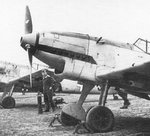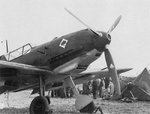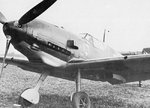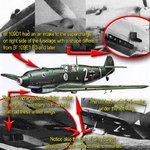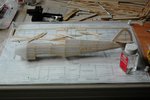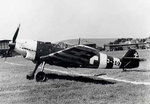Hallo Charles,
THX for the pictures of the front part of your model.For me it still looks like the B/C/D version.The nose is shorter than the E1,E3,E4 had.I think that the firm which made this kit did somethig what would be a Bf 109 generally only.Probably the kit is a compromise between a capability of the model for flying and possibility of accurate reduction.Simply it can be a BF 109 only but not an accurate maquette.To make the engine cowling problem clear,I've upload some pics I found in Squadron-Signal.-.Messerschmitt.Bf109.(Part.1) book.If you look at them you will be sure wchich one is more similar to your model.The other differences of these two planes are a piece of cake to correct them.So if you like the White 12 of Richthofen's squadron or another it is your choice and you will make it what you like,right?
THX for the pictures of the front part of your model.For me it still looks like the B/C/D version.The nose is shorter than the E1,E3,E4 had.I think that the firm which made this kit did somethig what would be a Bf 109 generally only.Probably the kit is a compromise between a capability of the model for flying and possibility of accurate reduction.Simply it can be a BF 109 only but not an accurate maquette.To make the engine cowling problem clear,I've upload some pics I found in Squadron-Signal.-.Messerschmitt.Bf109.(Part.1) book.If you look at them you will be sure wchich one is more similar to your model.The other differences of these two planes are a piece of cake to correct them.So if you like the White 12 of Richthofen's squadron or another it is your choice and you will make it what you like,right?



